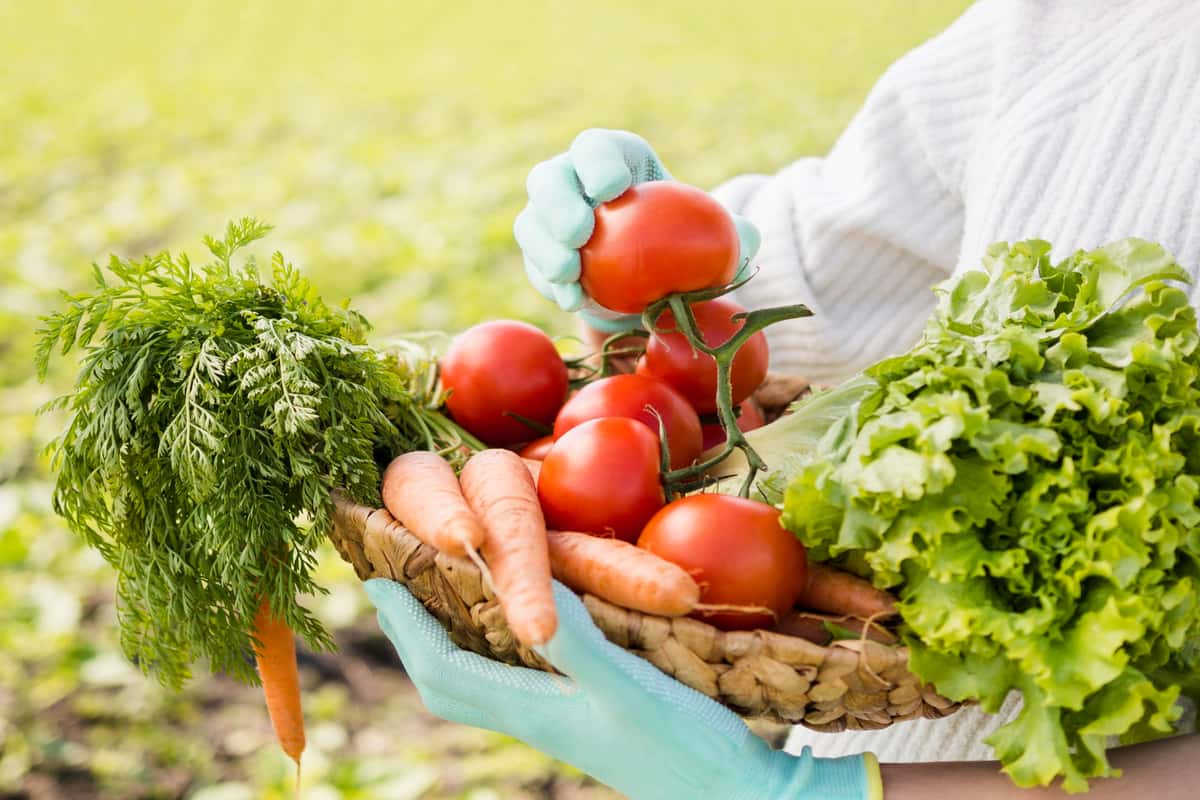Alternative agricultural methods refer to techniques and practices that differ from conventional agriculture. These methods include organic farming, permaculture, agroforestry, and hydroponics, among others.
The importance of alternative agricultural methods lies in their potential to reduce the negative impact of conventional agriculture on the environment, improve food security, and increase agricultural productivity. This article will explore the benefits, challenges, and types of alternative agricultural methods.
Types of Alternative Agricultural Methods
Organic Farming
Organic farming is a method of growing crops without synthetic fertilizers, pesticides, and genetically modified organisms (GMOs). Instead, organic farmers use natural inputs such as manure, compost, and crop rotation to improve soil fertility and control pests and diseases.
Benefits of Organic Farming
- Improved soil health: Organic farming promotes healthy soil by increasing soil organic matter, which improves soil structure, water-holding capacity, and nutrient availability.
- Reduced water pollution: Organic farming practices such as reduced tillage and cover cropping can reduce nutrient runoff and improve water quality.
- Enhanced biodiversity: Organic farming supports a diverse range of plants and animals, which can help to maintain healthy ecosystems.
- Chemical-free food: Organic food is free of synthetic pesticides and fertilizers, which can be harmful to human health.
Challenges of Organic Farming
- Lower yields: Organic farming can result in lower yields compared to conventional farming due to challenges such as weed control and pest management.
- Labor-intensive: Organic farming often requires more labor due to practices such as hand weeding and crop rotation.
- Higher costs: Organic farming inputs such as organic fertilizer and compost can be more expensive than synthetic inputs.
Permaculture
Permaculture is a system of agricultural design that mimics natural ecosystems. It involves growing crops, raising animals, and managing forests in a way that is sustainable and regenerative.
Benefits of Permaculture
- Improved soil health: Permaculture promotes soil health by incorporating practices such as cover cropping, composting, and reduced tillage.
- Reduced water usage: Permaculture promotes water conservation by incorporating practices such as rainwater harvesting and drip irrigation.
- Enhanced biodiversity: Permaculture promotes the use of diverse plant and animal species, which can help to maintain healthy ecosystems.
- Local food systems: Permaculture emphasizes local food production, which can improve food security and support local economies.
Challenges of Permaculture
- Complex design: Permaculture requires careful planning and design to ensure that different elements of the system work together in a harmonious way.
- Long-term approach: Permaculture is a long-term approach to agriculture that requires patience and persistence to establish.
- Knowledge-intensive: Permaculture requires a deep understanding of ecosystems and sustainable agriculture practices.
Agroforestry
Agroforestry is a method of growing crops and trees together in the same area. It involves planting trees and shrubs in and around agricultural fields to provide shade, improve soil health, and reduce soil erosion.
Benefits of Agroforestry
- Improved soil fertility: Agroforestry promotes soil health by incorporating practices such as tree planting, intercropping, and cover cropping.
- Increased biodiversity: Agroforestry promotes the use of diverse plant and animal species, which can help to maintain healthy ecosystems.
- Reduced greenhouse gas emissions: Agroforestry can help to reduce greenhouse gas emissions by sequestering carbon in trees and soil.
- Additional sources of income: Agroforestry provides farmers with additional sources of income through the sale of timber, fruit, and other tree products.
Challenges of Agroforestry
- Careful planning required: Agroforestry requires careful planning and management to ensure that crops and trees do not compete for resources.
- Long-term approach: Agroforestry is a long-term approach to agriculture that requires patience and persistence to establish.
- Limited availability of tree species: The availability of suitable tree species for agroforestry can be limited in some regions.
Hydroponics
Hydroponics is a method of growing plants without soil. It involves growing plants in a nutrient-rich solution that is delivered directly to the roots.
Benefits of Hydroponics
- Reduced water usage: Hydroponics uses up to 90% less water than conventional agriculture because water is recycled and reused.
- Increased productivity: Hydroponics can result in higher crop yields and faster growth rates compared to conventional agriculture due to precise control over plant nutrition and environmental conditions.
- Reduced land use: Hydroponics can be done in small spaces, and vertical farming can allow for the production of large amounts of food in small areas.
- Reduced pesticide use: Hydroponic systems are often housed in controlled environments, which can reduce the need for pesticides.
Challenges of Hydroponics
- High upfront costs: Hydroponic systems require a significant upfront investment in equipment and infrastructure.
- Technical expertise required: Hydroponic systems require technical expertise to set up and maintain.
- Dependence on energy: Hydroponic systems require energy to power lights, pumps, and other equipment.
- Limited crop variety: Some crops are not well suited to hydroponic growing, which can limit the variety of crops that can be grown using this method.
Conclusion
Alternative agricultural methods offer promising solutions to the challenges facing conventional agriculture. Organic farming, permaculture, agroforestry, and hydroponics are just a few examples of the many alternative methods available to farmers. Each method has its benefits and challenges, but all share a common goal of promoting sustainable and regenerative agriculture.
Looking ahead, alternative agricultural methods will play an increasingly important role in meeting the growing demand for food while protecting the environment. Governments, NGOs, and private sector organizations should support the adoption of these methods through education, training, and financial incentives. Consumers can also play a role by supporting farmers who use alternative agricultural methods and by making conscious choices about the food they eat.
By embracing alternative agricultural methods, we can create a future where food is produced in harmony with nature, where ecosystems are protected and restored, and where communities are supported and nourished.

